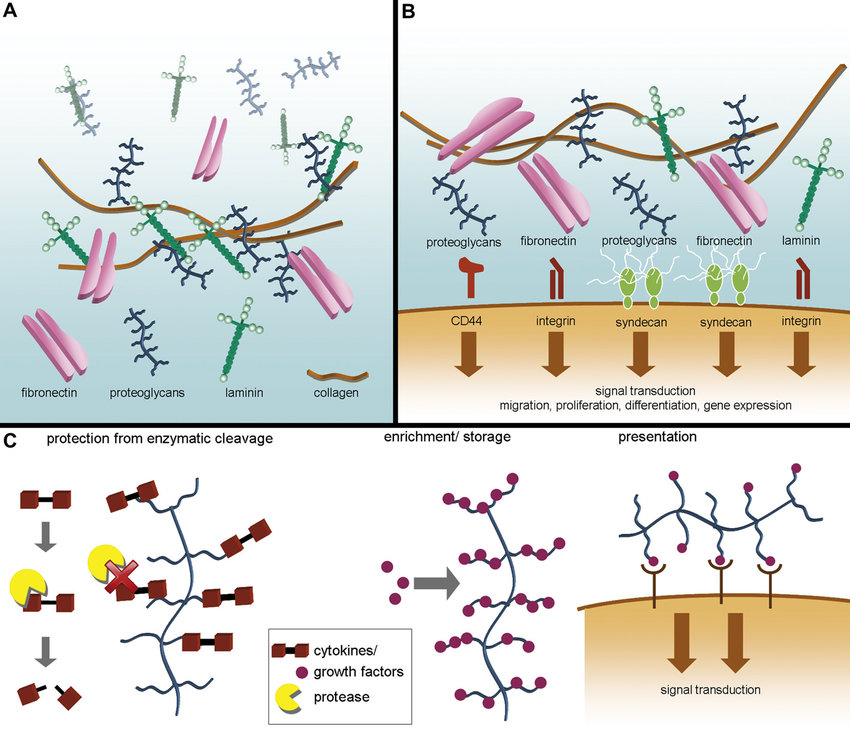
Influence of ECM Composition on Cell Phenotype And Drug Response
Drug development is often a lengthy and costly process. Despite the technological advancements made in this regard in the past century, it still has low success rates in clinical trials. Presently over half of drugs that make to Phase 2 or 3 of clinical trails fail, due poor efficacy, safety issues and low therapeutic index (1). The need for effective therapeutic measure remains high and highlights the urgent need for novel technologies that offer better precision in drug discovery, particularly in the field of precision medicine comprising of biomarkers and precise drug targets, as well as in the development of pre clinical models that better represent in-vivo physiology with microenvironment factors (2).
To this end researchers have focused on the importance of extracellular matrix (ECM) in cellular function and 3D cell culturing has become a vital tool in recreating tissue microenvironment to recapitulate key factors that is crucial for cell behaviour. Although traditional 2D monolayer culturing is still employed in high throughput screening, 3D cell cultures are fast becoming a more appropriate method of choice in drug discovery (3).
ECM composition
Originally the ECM was thought to provide cells structural support as an anchorage point. Years of research now tell of the more comprehensive role of ECM for normal cell behaviour, in a tissue specific manner. ECM components include:
– Matrix proteins (collagen, elastin)
– Glycoproteins (fibronectin)
– Glycosaminoglycans (heparin sulfate, Hyaluronan)
– Proteoglycans
– Growth factors (TGF-β)
– Vascular endothelial growth factors (VEGF)
– Platelet derived growth factors (PDGF)
– Hepatocyte growth factors (HGF)
– And other secretory proteins such as proteolytic enzymes and protease inhibitors (4,5).
Changes in these components plays an important role in cell proliferation, differentiation and migration, cellular survival, cell adhesion, cell structure and cellular signaling pathways that determine normal cellular function. The composition of these ECM molecules is also involved development of diseases such as fibrosis, malignant tumors and genetic disorders. In drug discovery processes, these components play a vital role in cellular response to drugs by either promoting drug efficacy, modifying drug mechanism of action or developing drug resistance (4,5).
The microenvironment of tumor cells for instance is variable and depends on the type and location of tumor. Changes in ECM composition in this regard affects drug response by modifying the drug targets present within the cells or altering cellular defense mechanisms (e.g. increasing cell repair mechanisms or eluding apoptosis) (6). Furthermore ECM molecules such as hyaluronic acid, soluble factors, tissue inhibitors, cytokines and growth factors all play a role in mediating drug response and drug resistance in tumor cells (3). To address the wide range of ECM components regulating cellular response to therapeutics requires a reproducible, and reliable research platform that faithfully mimic the tumor microenvironment such as that produced via 3D cell culture techniques. To this effect both scaffold based (organoids) and scaffold independent (spheroid etc.) 3D culture techniques has become the go to model for cancer drug discovery processes.
References
1. Arrowsmith, J., and Miller, P. (2013). Trial watch: phase II and phase III attrition rates 2011-2012. Nat. Rev. Drug Discov. 12:569.
2. Pampaloni, F., Reynaud, E. G., and Stelzer, E. H. (2007). The third dimension bridges the gap between cell culture and live tissue. Nat. Rev. Mol. Cell Biol. 8, 839–845.
3. Langhans SA (2018) Three-Dimensional in Vitro Cell Culture Models in Drug Discovery and Drug Repositioning. Front. Pharmacol. 9:6.
4. Bonnans, C., Chou, J., and Werb, Z. (2014). Remodelling the extracellular matrix in development and disease. Nat. Rev. Mol. Cell Biol. 15, 786–801.
5. Mouw, J. K., Ou, G., and Weaver, V. M. (2014). Extracellular matrix assembly: a multiscale deconstruction. Nat. Rev. Mol. Cell Biol. 15, 771–785.
6. Holle, A. W., Young, J. L., and Spatz, J. P. (2016). In vitro cancer cell-ECM interactions inform in vivo cancer treatment. Adv. Drug Deliv. Rev. 97:270–279.
7. Moreira AM, Pereira J, Melo S, Fernandes MS, Carneiro P, Seruca R, Figueiredo J. The Extracellular Matrix: An Accomplice in Gastric Cancer Development and Progression. Cells. 2020; 9(2):394.



